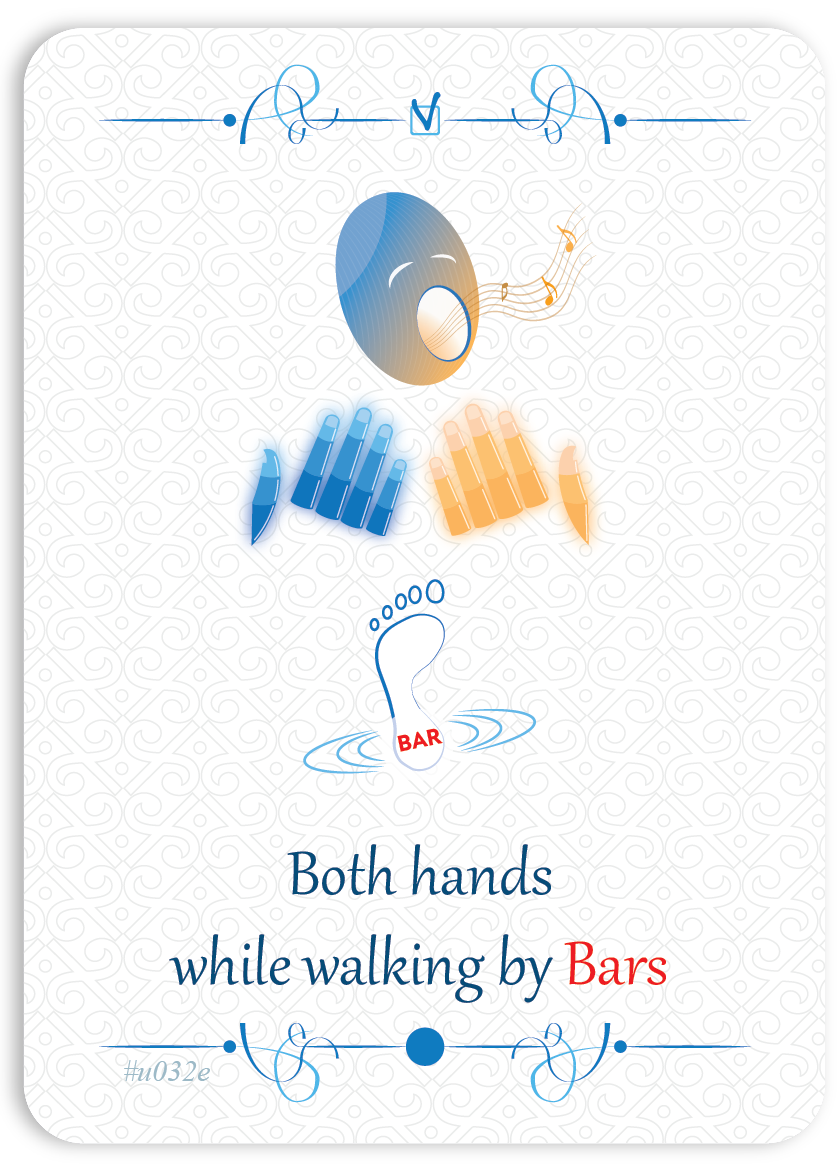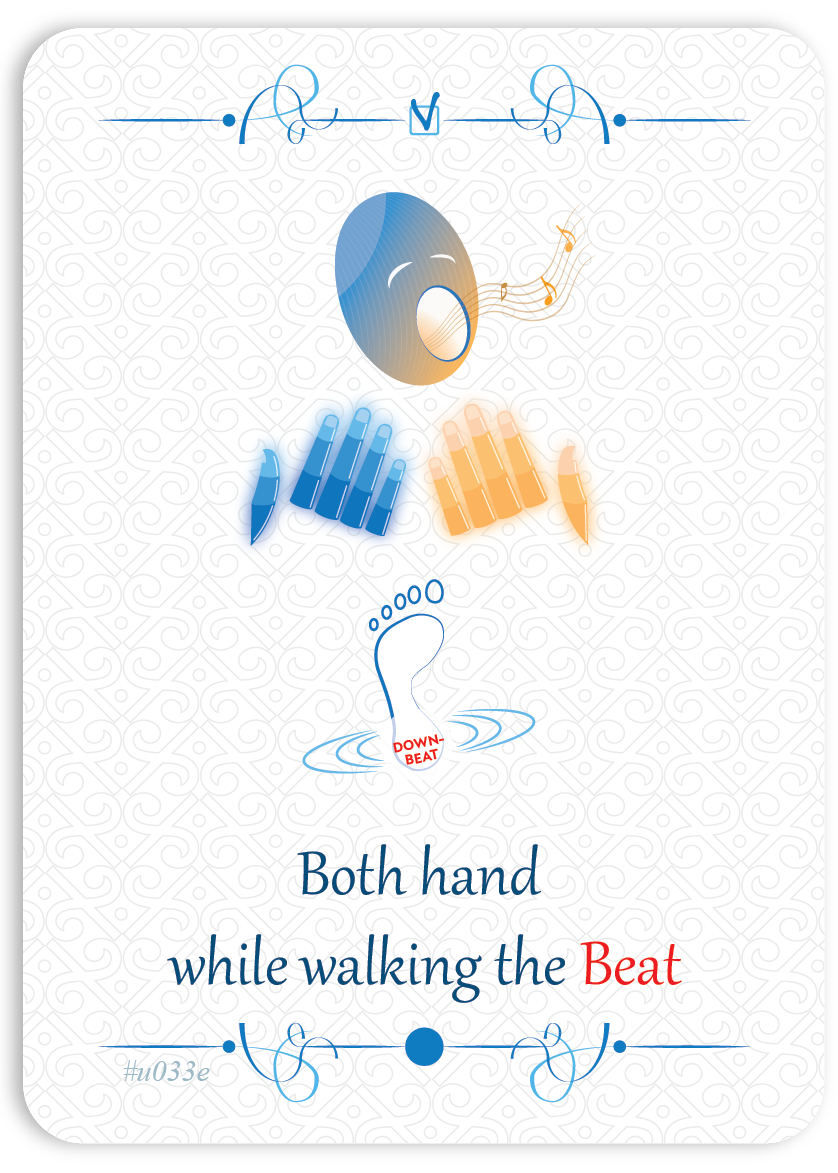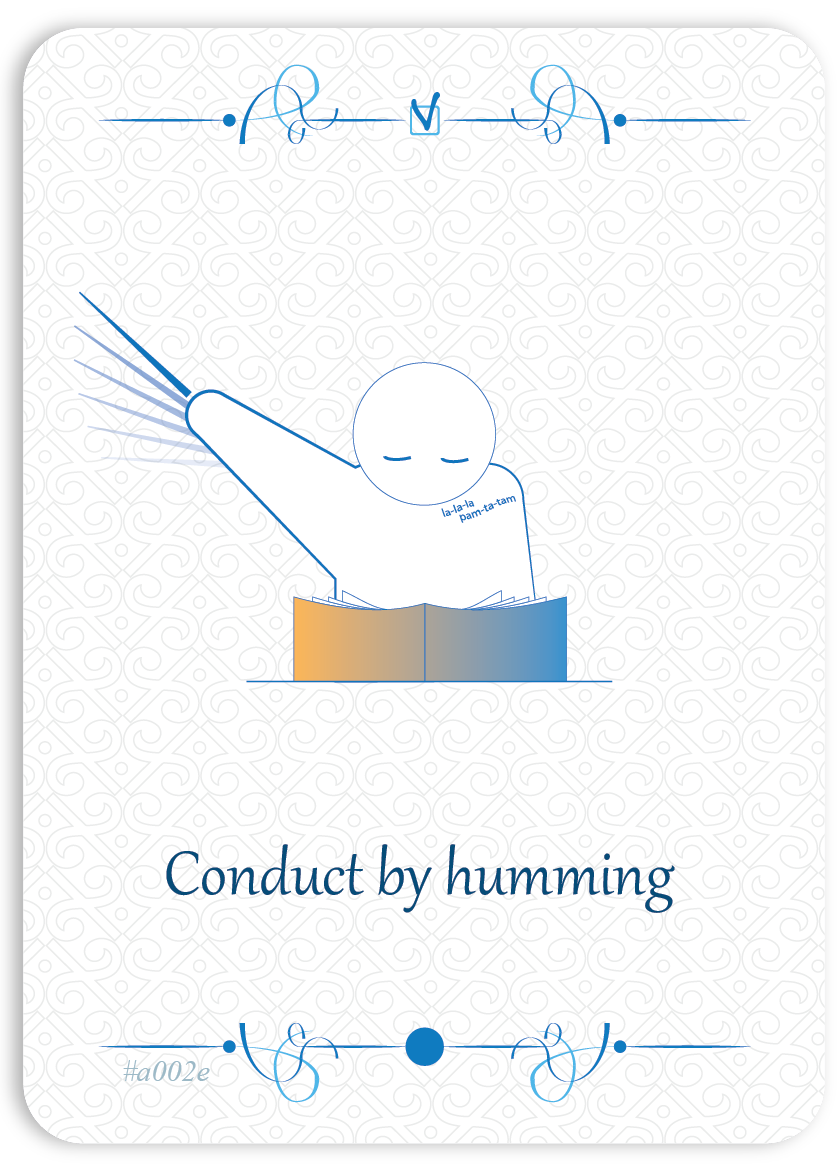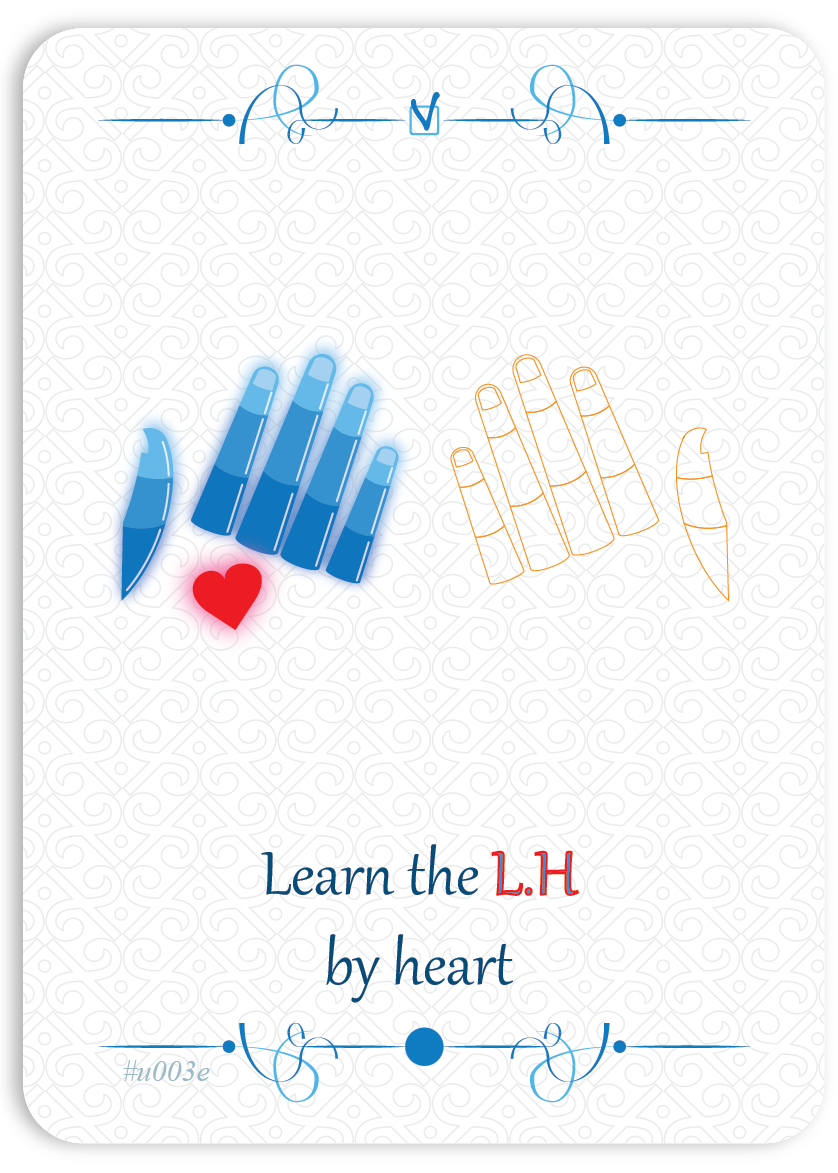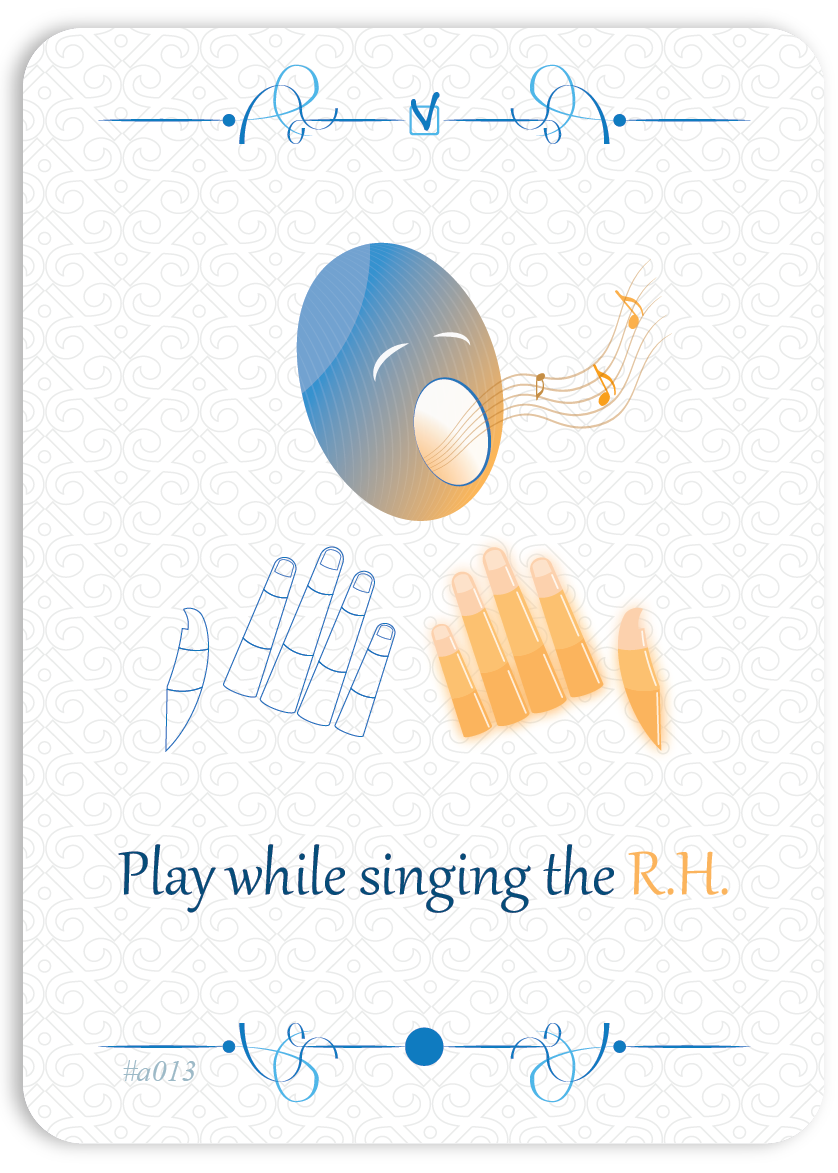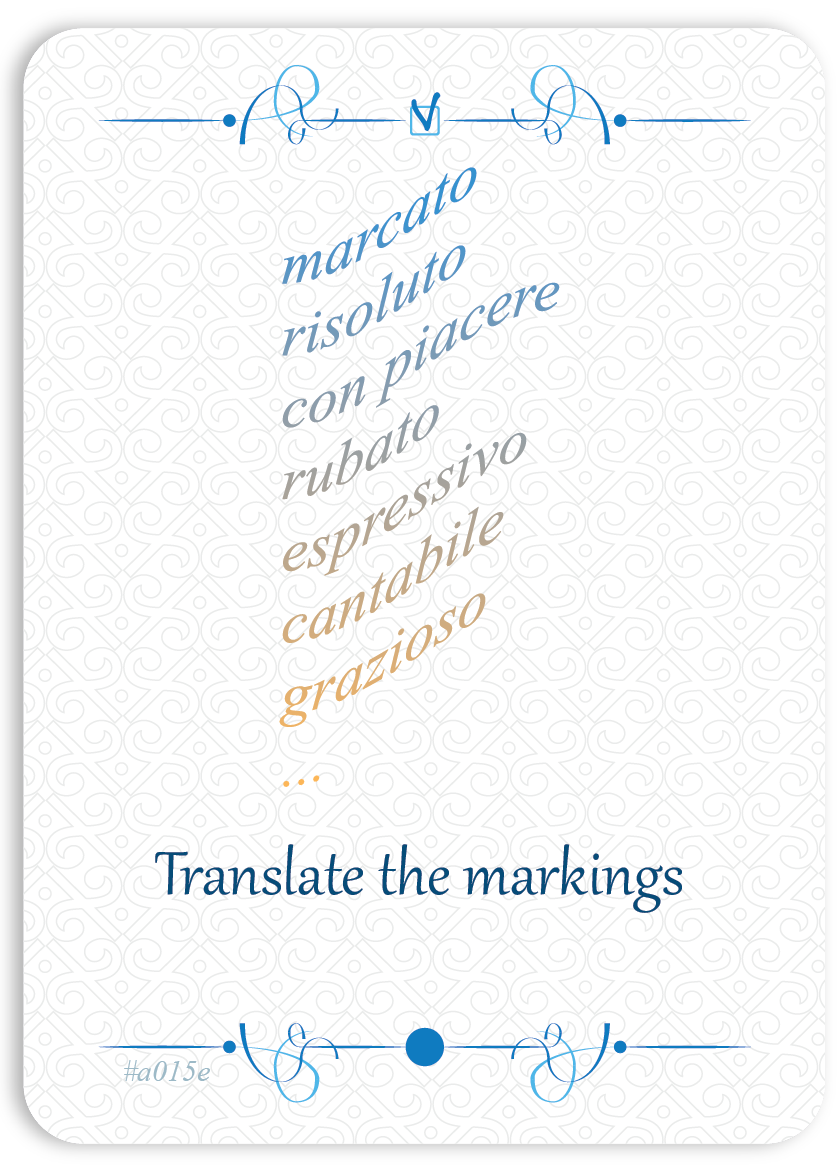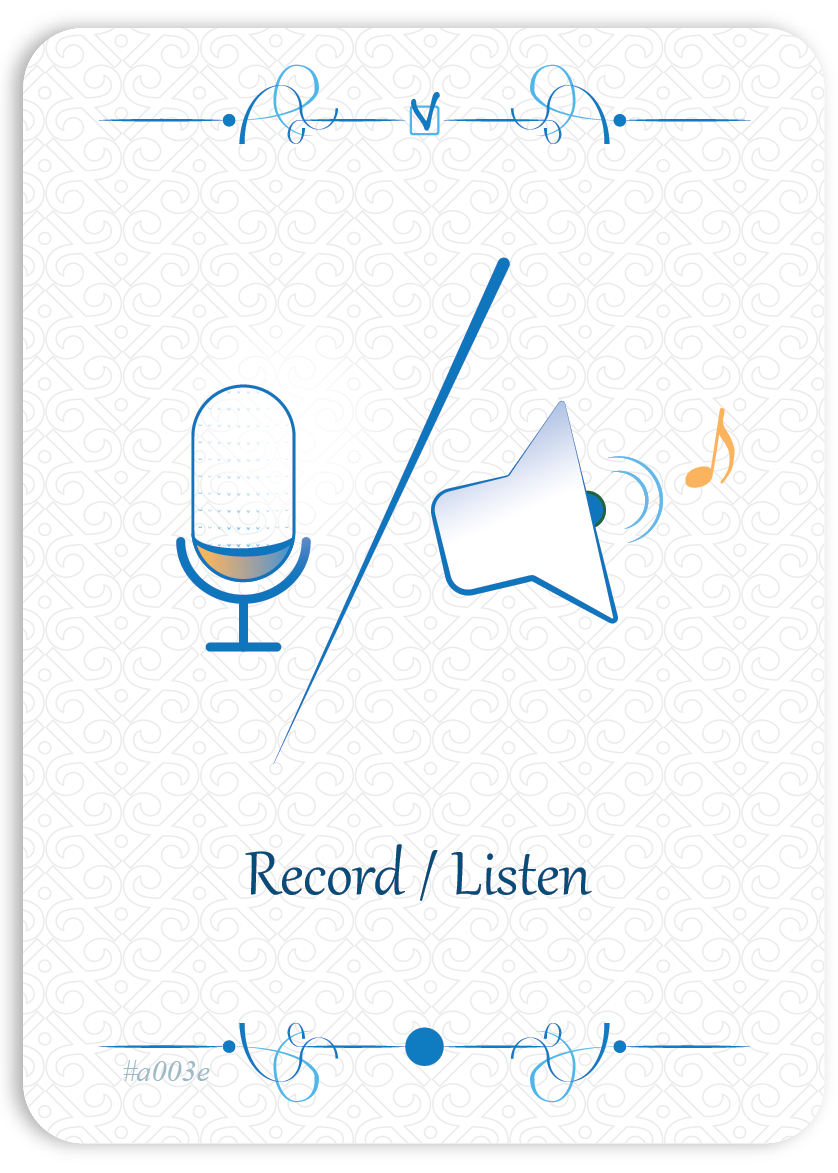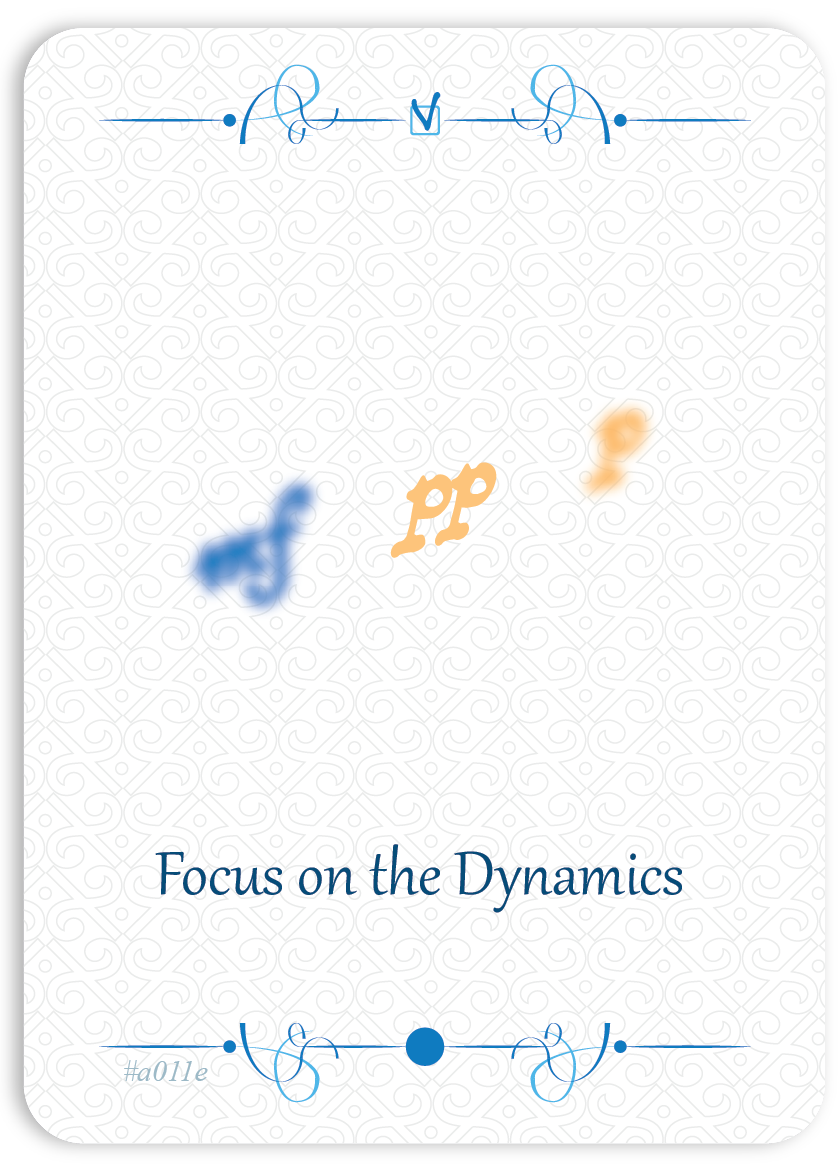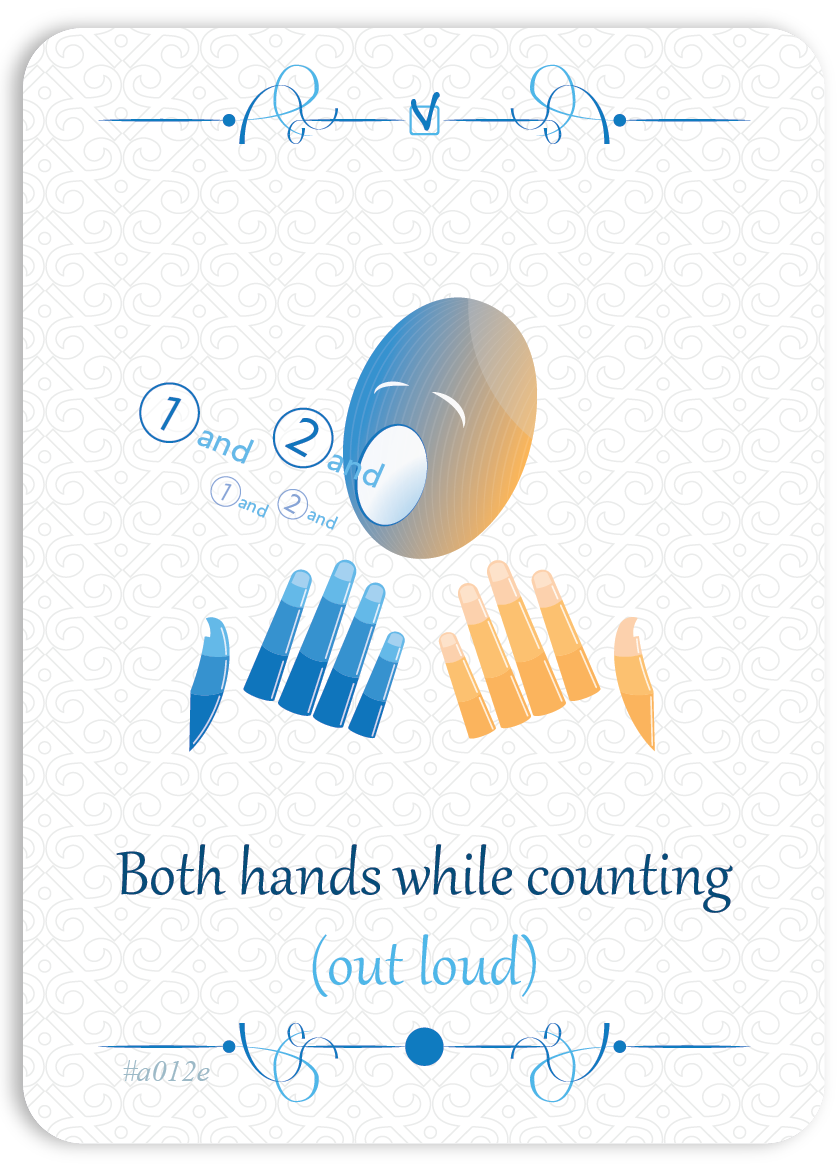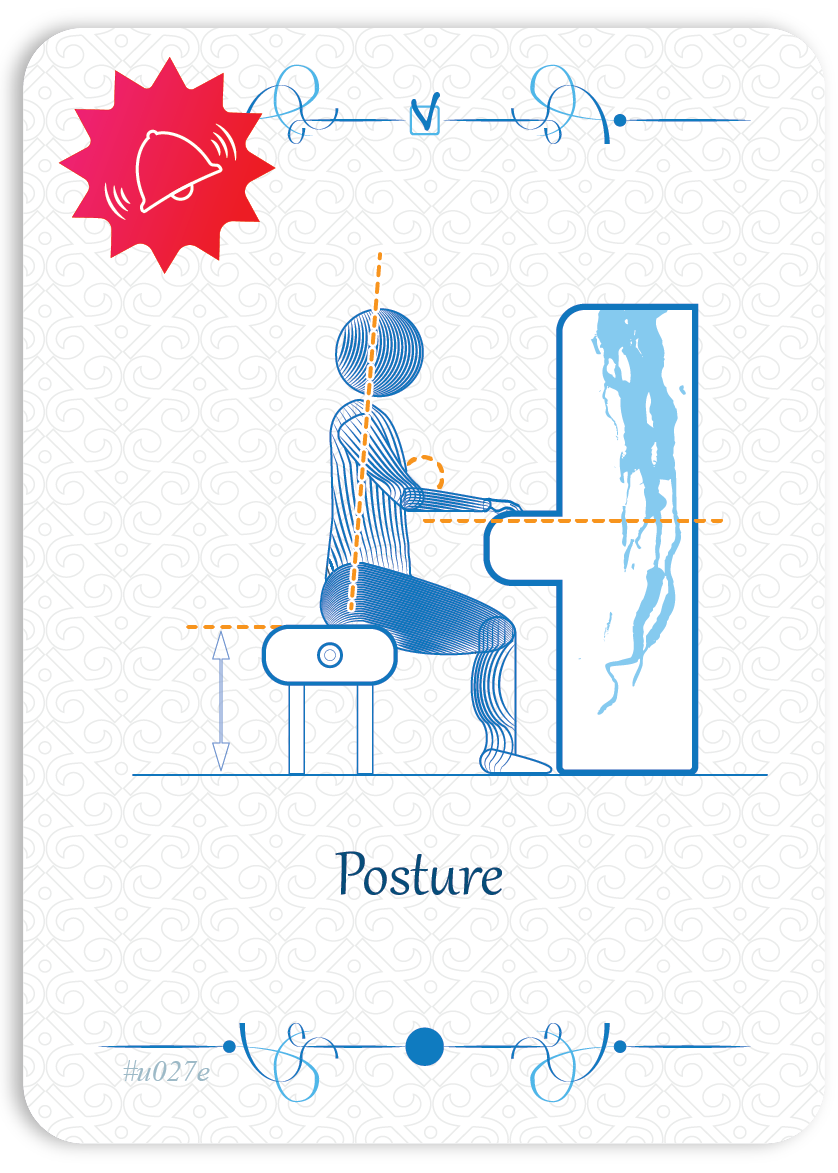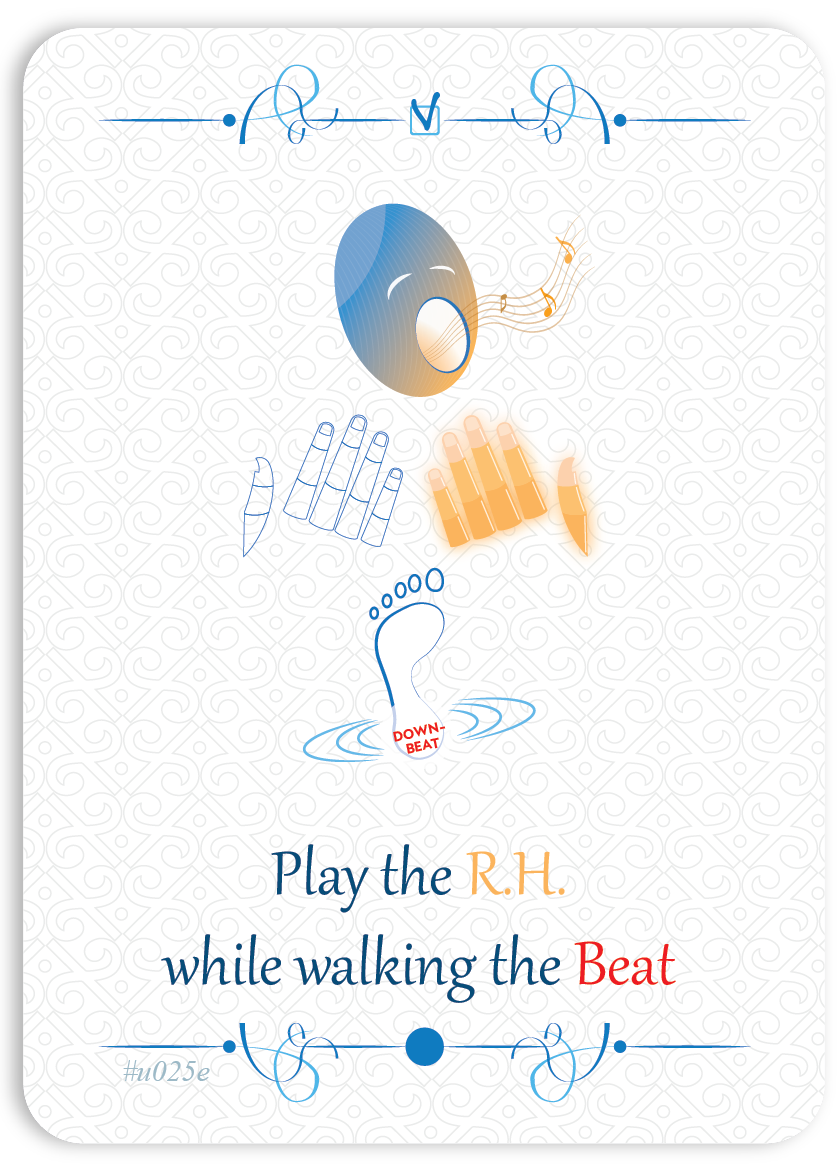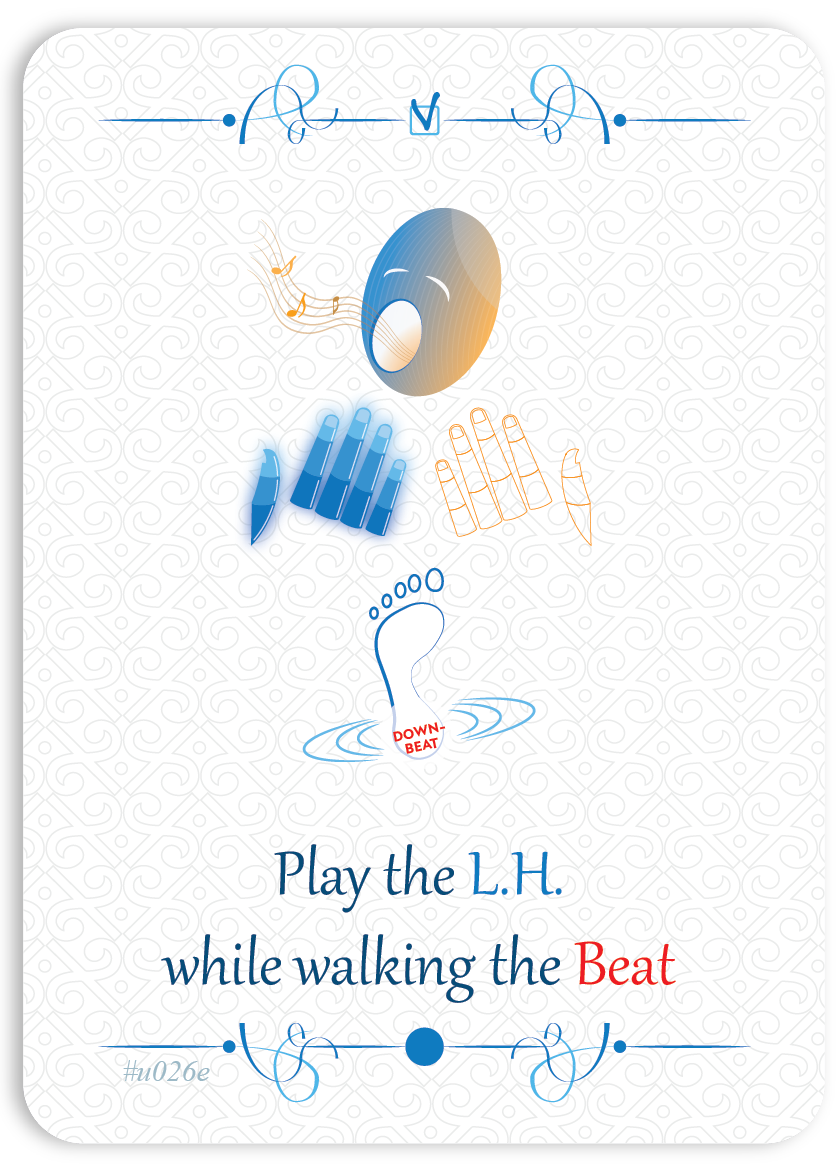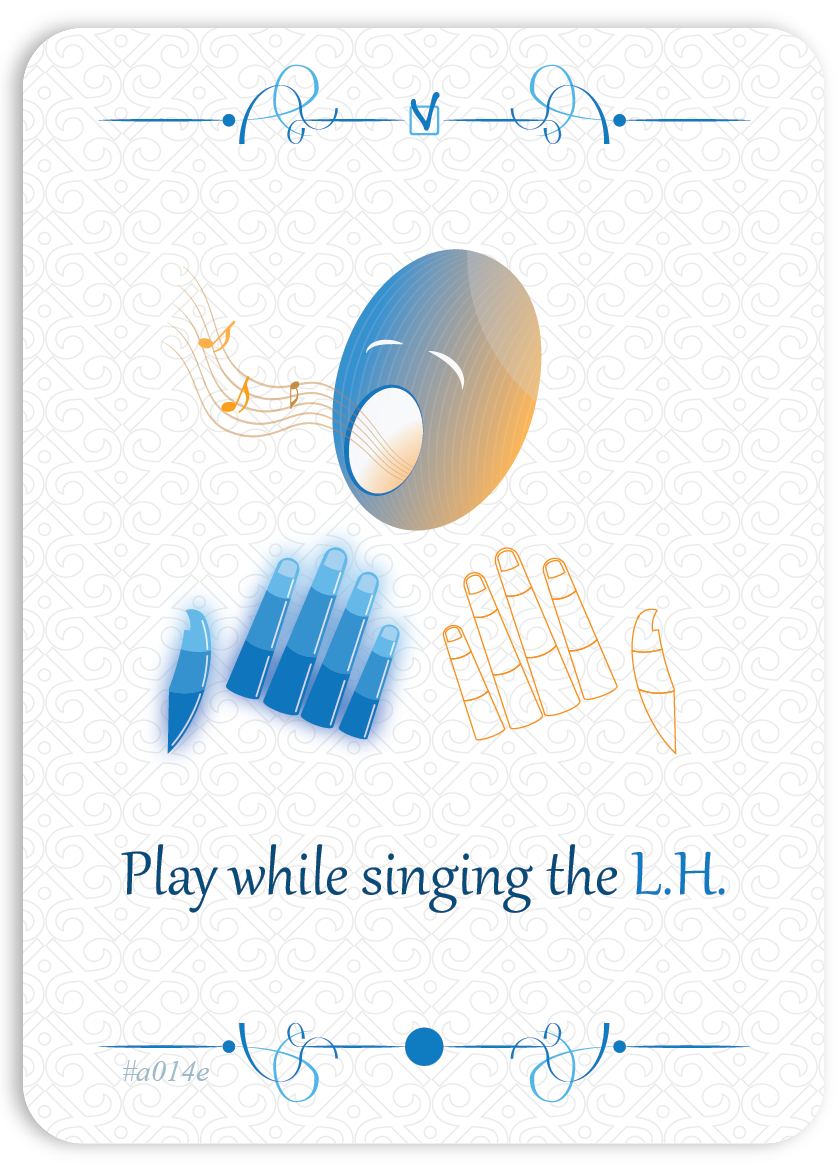Checking tips | ★✩✩
In this deck1, you will find the most accessible learning tips, presented in random order. The advice below is extremely useful for deepening your practice of a piece you have already started, or for assessing the strength of your learning skills, especially a few weeks before an event such as a concert.
- Select a short passage of your piece (2 to 8 measures) and apply the exercise suggested on the card, described below.
- ⚠ If the card doesn’t suit you, move on to another and continue practicing with other exercises in the deck.
______________
1 This deck contains 10 cards and is carefully shuffled each time you consult it.
→ Swipe from one card to another by sliding your finger over the card you see.
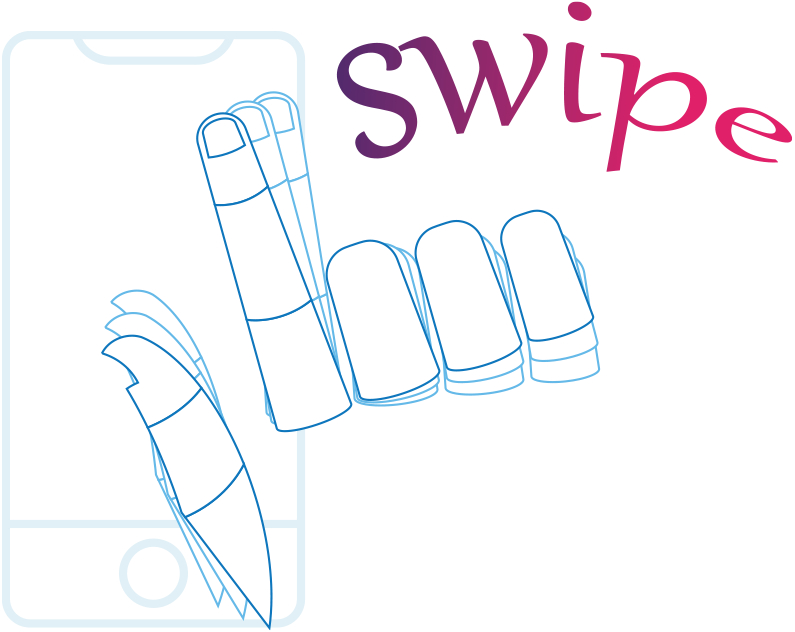
-
Both hands while walking by Bars
★✩✩→ Am I able to play with both hands together while “walking” the beat on the downbeat of each measure?
Play both hands together while “walking” only on the first beat of each measure.
Walking the beat means lifting your feet alternately (one, then the other) so that each foot leaves the floor completely and then returns in sync with the note you play and sing.
-
Both hands while walking the Beat
★✩✩→ Am I able to play with both hands together while “walking” the beat at the same time?
Play both hands together while “walking” the beat.
Walking the beat means lifting your feet alternately (one, then the other) so that each foot leaves the floor completely and then returns in sync with the note you play and sing.
If you encounter difficulties, you can mark the beats on your sheet music. This will help you locate them more easily.
Draw “beat lines” across both staves (this is useful because it highlights coordination between the hands). The space between two lines should correspond to exactly one “beat.” The duration between two beat lines is always consistent.
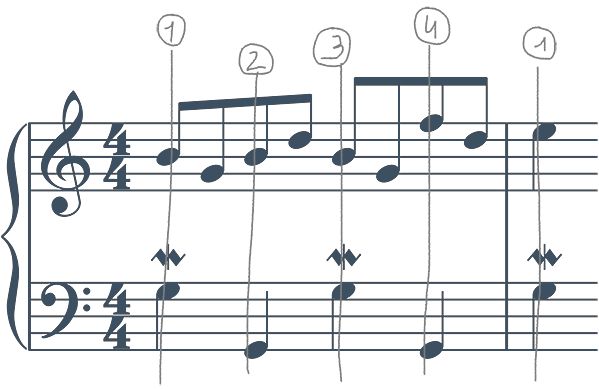
-
Conduct by humming
★✩✩Hum = Sing softly
→ Am I able to sing while marking the pulse without playing?
Sing the melody of the section softly, as if it were a lullaby, while keeping the pulse or conducting.
Then try it without looking at the score.
This “song” is a kind of essence of your piece that you will embody through the instrument. Remember that 1dynamics
, 2articulations, and 3progressions are all part of the music.
Download the worksheets:
1 Dynamics: piano, forte, mezzo-forte, pianissimo. Also called dynamic levels, these are the different ways to convey musical content—for example, softly (piano), powerfully (forte), or gently (pianissimo), etc.
Download the dynamics worksheet2 Articulations: legato, staccato, tenuto. These are the different ways of connecting notes: smoothly (legato), detached (staccato), or holding each note carefully for its full value (tenuto).
3 Progressions: crescendo (getting louder), diminuendo (getting softer), accelerando (getting faster), ritenuto (slowing down). These are the gradual ways (little by little) to change dynamics or tempo.
-
Learn th L.H. by heart
★✩✩→ Have I learned the left-hand part by heart?
The left hand often carries the "harmonic rhythm" (the rate at which the harmonies change).
It is important to learn it by heart to strengthen your memory.
Approach it as if it were a piece on its own. A piece that might feel a little unusual—enjoy this strangeness as part of the charm of the music. -
Play while singing the R.H.
★✩✩→ Am I able to play while singing the right-hand part?
Sing the right-hand part using the note names while playing. Make sure to sing it with the appropriate 1 dynamics, 2 articulations, and 3 progressions.
______________
1 Dynamics : piano, forte, mezzo-forte, pianissimo. Also called dynamics, these indicate different ways of expressing the music—for example, a soft voice (piano), a strong voice (forte), or a very soft voice (pianissimo), etc. Download the dynamics sheet
2 Articulations : legato, staccato, tenuto. These are the different ways of connecting or separating notes: smooth and connected (legato), detached (staccato), or holding a note for its full value (tenuto).
3 Progressions : crescendo (gradually louder), diminuendo (gradually softer), accelerando (gradually faster), ritenuto (slowing down). These indicate gradual changes in dynamics or tempo, little by little.
-
Translate the markings
★✩✩→ Are all the markings on the score clear to me?
If there are any words you don’t understand, look up their meanings and write the translations directly on your score.
Think about how these markings can influence your playing and incorporate these ideas into your interpretation.
Download the most common musical terms (in Italian)
-
Record / Listen
★✩✩→ Did I practice while recording myself?
When we play, it’s not always possible to fully grasp the overall sound picture we produce, since we have multiple elements to manage at the same time. This is why recording yourself can serve as an objective reference.
Record yourself and answer the following questions:
Is the “artistic intention” you want to convey to the audience actually perceivable?
What discrepancies, if any, do you notice between what you intended and what you hear on the recording?
Make a second recording, adjusting the aspects that caught your attention the first time.
-
Focus on Dynamics
★✩✩→ Have I carefully detailed the dynamics 1?
Now review the dynamics in your piece:
by assigning a distinct emotional character to each dynamic
by establishing the hierarchy 2 from the softest to the loudest dynamic
Download the dynamics sheet
______________
1 Dynamics : piano, forte, mezzo-forte, pianissimo. Also called "dynamic markings," these indicate the different ways of expressing musical content—for example, softly (piano), powerfully (forte), or timidly (pianissimo), etc.
2 Hierarchy : the organization of a set in a sequence where each element is stronger than the next (Le Robert, 2023)
-
Both hands while counting
★✩✩→ Do I have a clear understanding of the beats?
Play all the notes hands together while counting the beats out loud.
You can also "walk" the pulse at the same time.
Walking the pulse means lifting your feet alternately (one, then the other) so that the foot leaves the floor completely, then returns to the floor in sync with the note you play and sing. -
Posture
★✩✩→ Do I pay attention to my posture? ?
When we play, it is not always possible to fully perceive the entire sound image we are creating. This is why recording can serve as an objective reference.
Record yourself and consider the following questions:
- Is the “artistic intention” you wish to convey to the audience potentially perceptible?
- What discrepancies do you notice between what you planned and what you hear in the recording?
Make a second recording, correcting the issues you noticed.
-
Play r.h. while walking the Beat
★✩✩→ Am I able to play the right-hand part while singing it and walking the beat at the same time?
Play the right-hand part, sing it, and mark the beat by “walking.” Walking the beat means lifting your feet alternately (one, then the other) so that each foot leaves the floor completely and then returns in sync with the note you play and sing.
If you find this challenging, you can mark the beats on your score to help identify them.
Draw “beat lines” across both staves. This method is useful because it highlights coordination between the hands. The space between two lines should always correspond to one beat. The time that passes between two beat lines is always the same.

-
Play l.h. while walking the Beat
★✩✩→ Am I able to play the left-hand part while singing it and walking the beat at the same time?
Play the left-hand part, sing it, and mark the beat by “walking.” Walking the beat means lifting your feet alternately (one, then the other) so that each foot leaves the floor completely and then returns in sync with the note you play and sing.
If you find this challenging, you can mark the beats on your score to help identify them.
Draw “beat lines” across both staves. This method is useful because it highlights coordination between the hands. The space between two lines should always correspond to one beat. The time that passes between two beat lines is always the same.

-
Play while singing the L.H.
★✩✩→ Am I able to play while singing the left-hand part?
The left hand itself forms a large melody, very different from the right hand. It is essential to be able to sing it accurately and to memorize it so that it can properly support the right hand.
Sing the left-hand part using the note names while playing. Make sure to sing it with the appropriate 1 dynamics, 2 articulations, and 3 progressions.
______________
1 Dynamics : piano, forte, mezzo-forte, pianissimo. Also called dynamics, these indicate different ways of expressing the music—for example, a soft sound (piano), a strong sound (forte), or a very soft sound (pianissimo), etc. Download the dynamics sheet
2 Articulations : legato, staccato, tenuto. These are the different ways of connecting or separating notes: smooth and connected (legato), detached (staccato), or holding a note for its full value (tenuto).
3 Progressions : crescendo (gradually louder), diminuendo (gradually softer), accelerando (gradually faster), ritenuto (slowing down). These indicate gradual changes in dynamics or tempo, little by little.
- Both hands while walking by Bars
- Both hands while walking the Beat
- Conduct by humming
- Learn th L.H. by heart
- Play while singing the R.H.
- Translate the markings
- Record / Listen
- Focus on Dynamics
- Both hands while counting
- Posture
- Play r.h. while walking the Beat
- Play l.h. while walking the Beat
- Play while singing the L.H.
Discover the tips :
Simple ★✩✩
Intermediate ★★✩
Advanced ★★★
Super Deck
